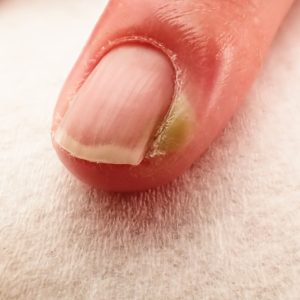
Paronychia is a common infection of the skin surrounding the nail bed. It can be caused by bacteria, fungi, or other microorganisms. Here are some key facts about paronychia:
Causes:
- Paronychia is usually caused by an injury or damage to the skin around the nail bed, which can allow bacteria or fungi to enter and cause an infection.
- People who bite their nails or have a habit of picking at the skin around the nails are at higher risk of developing paronychia.
Symptoms:
- Symptoms of paronychia include pain, redness, swelling, and tenderness around the nail bed.
- The affected area may also be warm to the touch and may produce pus or other drainage.
Diagnosis:
- A diagnosis of paronychia is usually made based on the appearance of the affected area and the patient’s medical history.
- In some cases, a culture or other laboratory tests may be done to identify the specific microorganism causing the infection.
Treatment:
- Treatment for paronychia depends on the severity and cause of the infection.
- Mild cases may be treated with warm soaks and topical antibiotics.
- More severe or persistent cases may require oral antibiotics or drainage of any abscesses or collections of pus.
Prognosis:
- With prompt and appropriate treatment, most cases of paronychia resolve without complications.
- However, if left untreated or if the infection spreads, complications such as cellulitis or osteomyelitis (infection of the bone) can occur.
- People with recurrent or chronic paronychia may need to modify their habits or seek treatment for underlying medical conditions that may be contributing to the problem.
